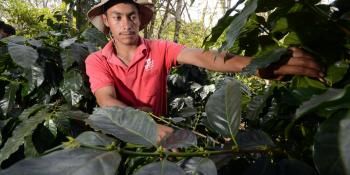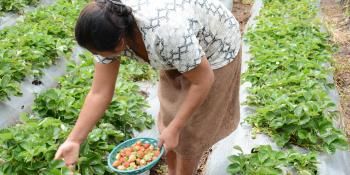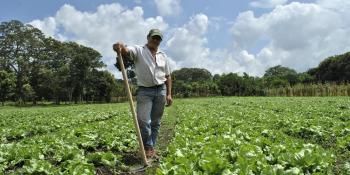Information and communication innovations in East Africa

Information and communications technologies offer an opportunity to bridge gaps in the reach of climate information services.
By Mea Halperin
In recent years, Tanzania and Malawi have seen changes to their agricultural potential. Tanzania, previously considered the breadbasket of Rhodesia, has experienced reductions in coffee and maize as a result of droughts, flooding, and overall erratic rainfall. Malawi also saw decreases in crop yields due to changes in rainfall patterns and a lack of access to critical inputs like fertilizer. As climate projections suggest that this trend toward extreme events will likely continue, people at the local, national, and international levels are looking for effective ways to improve the region’s food security. The CGIAR Research Program on Climate Change, Agriculture and Food Security (CCAFS), along with the Global Framework for Climate Services (GFCS) Adaptation Programme in Africa, is working with local agencies to find ways to reach farmers and pastoralists with the climate services they need.
Among the communication channels that individuals and organizations are employing to provide services that help farmers adapt to climate variability, information and communications technologies (ICTs) are emerging as among the most effective – particularly for weather forecasts and monitoring information within he growing season. Surveys show that, depending on the region, between 50% and 95% of people in Tanzania own mobile phones, and 50% to 60% of people have access to radios. In Malawi, although fewer own mobile phones, approximately 75% of the population has access, and over 50% own radios.
This method for immediate climate information delivery has great potential for allowing farmers to make informed decisions for the short- and long-term. The Tanzania Meteorological Agency has send climate information through the postal service. But for shorter-term forecasts such as 10-day precipitation, by the time farmers received it, there would not be enough time to make decisions.
Several communication issues challenge the effective communication of information between meteorological services and farmers. Literacy rates and language barriers mean that not everyone can read written advisories. Farmers also have a tendency to place their trust in local advisors or someone within the community, rather than with agents from outside organizations.
ICTs address these challenges and allow for information to reach individuals at different levels in a variety of innovative ways. Community radio shows and clubs allow farmers to tune in to programs with agrometeorology experts and trained local agents, and to call in with questions and provide feedback. Meteorology agencies, cell phone providers, and community radio partners can also provide climate and weather advisory hotlines and voice message services directly to an individual’s cell phone. In addition to updates on precipitation and temperature, these advisories can include advice on types of seeds to buy and plant, and locations of the nearest markets to find other agricultural inputs.
From workshops with local stakeholders in Malawi and Tanzania, CCAFS, the International Crops Research Institute for the Semi-Arid Tropics (ICRISAT), and Farm Radio International have determined that these ICT-based services would be a welcome and effective communication strategy within farming communities. Where they have already been implemented, they are the preferred method of information delivery for many farmers. The partners within the GFCS Adaptation Program are working to bring in additional partners and resources to scale up ICT services in an effective and economically feasible way.
Read more:
- Reaching farmers with climate services in Malawi and Tanzania
- Farmer-responsive climate services built in Tanzania and Malawi
- Photo story: Farmers in Tanzania use climate information to cope with variability
- Scaling up climate services in Tanzania
- Strengthening availability and use of climate services in Africa
- How can we reach a million farmers with climate services?
- CCAFS science strengthens investments in climate services for agriculture
The blog was written by Mea Halperin, Communications consultant for CCAFS flagship 2.



